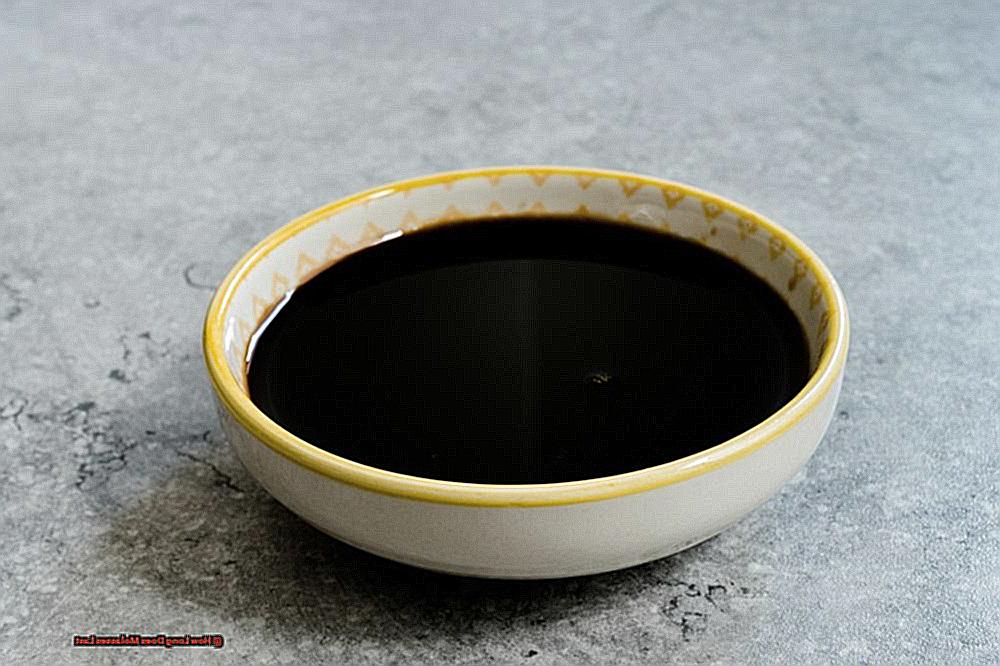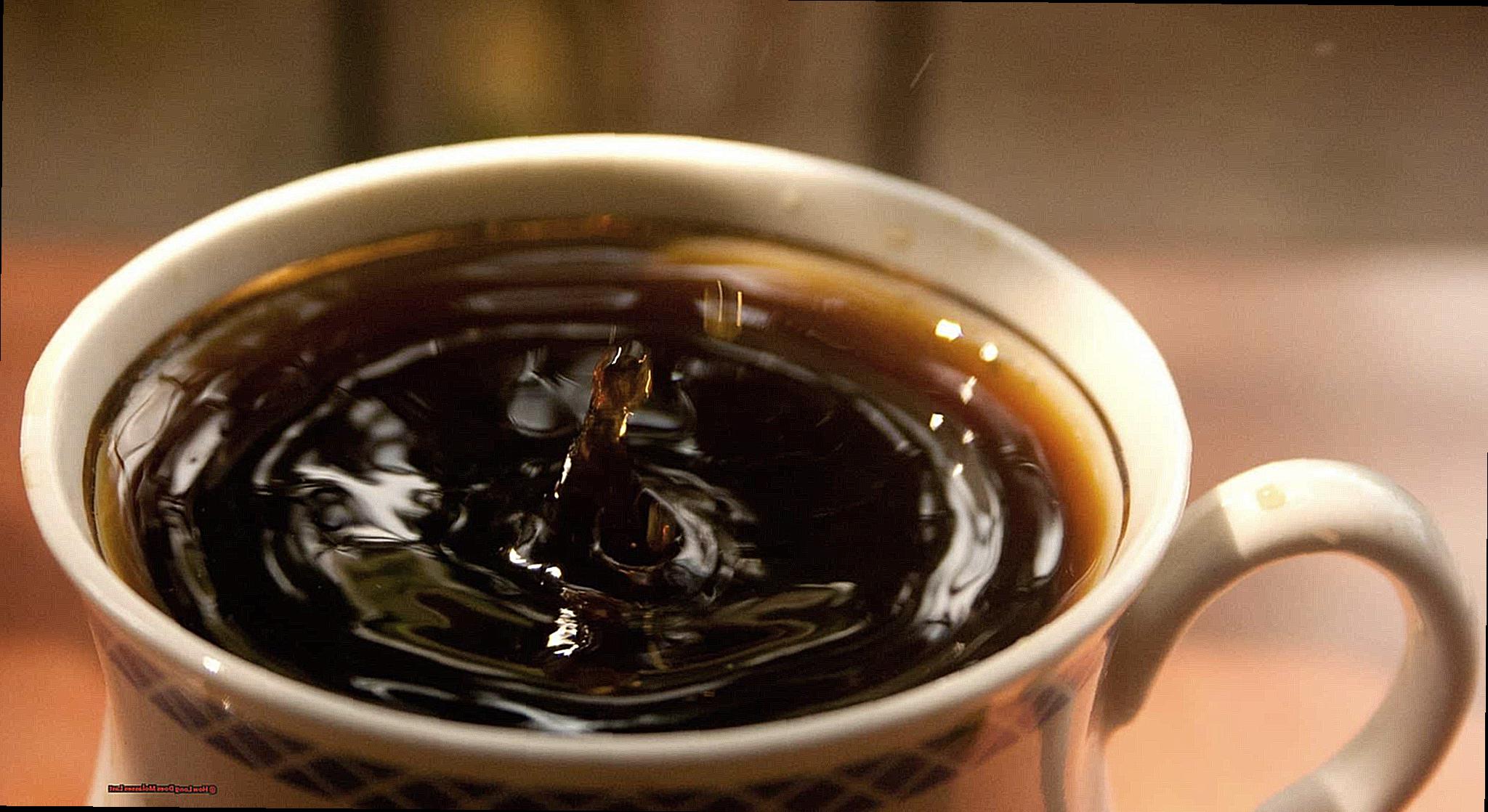For centuries, molasses has been a staple in baking and cooking, known for its thick, dark syrupy texture and rich flavor. But have you ever wondered just how long this sweet and sticky substance can last? The answer may surprise you. Let’s dive into the fascinating world of molasses and explore its shelf life.
First things first, let’s talk about what molasses actually is. Made from sugar cane or sugar beets, it contains a high concentration of sugar that gives it its signature sweetness. And due to this high sugar content, molasses has a longer shelf life compared to other food products.
But just how long can it last? Unopened bottles of molasses can actually stay on your shelf for up to five years. That’s right, five whole years. But once opened, the clock starts ticking. Fear not though, as even opened bottles of molasses can last up to two years if stored properly.
However, it’s important to note that over time, the quality and flavor of molasses may deteriorate. So proper storage is key in keeping your molasses tasting fresh for as long as possible.
To extend the shelf life of your beloved molasses, make sure to keep it in a cool, dry place away from direct sunlight and heat sources. And after each use, be sure to seal the bottle tightly to prevent air and moisture from entering.
So there you have it – next time you reach for that trusty bottle of molasses in your pantry, remember that with proper storage techniques, it can last for years. Stay tuned as we delve deeper into the world of molasses and uncover more interesting facts about this versatile ingredient.
Contents
- 1 Does Molasses Expire?
- 2 How Long Does Molasses Last?
- 3 What Factors Influence Molasses Longevity?
- 4 How To Properly Store Molasses?
- 5 Does Opened Molasses Degrade Faster?
- 6 Can Molasses Go Bad in the Sun?
- 7 Does Refrigeration Extend Molasses Shelf Life?
- 8 How To Determine If Molasses Has Gone Bad?
- 9 Can Expired Molasses Make You Sick?
- 10 Conclusion
Does Molasses Expire?
Molasses does have an expiration date, but its shelf life is quite long. If stored correctly, it can last up to 10 years, although it is recommended to use it within 1-2 years for the best quality. The shelf life of molasses may vary depending on the brand and whether sulfur dioxide has been added as a preservative.
Proper storage is crucial for maintaining the quality and safety of molasses. It is advised to store it in a cool, dry, and dark place, away from heat and humidity. While refrigeration is not necessary, it can help protect molasses from heat and insects. Freezing is not recommended as it can change the texture.
Signs of spoilage in molasses include mold growth or unusual smells or tastes. If you notice any of these indications, it is best to dispose of the molasses properly. Always check the best-before date on the label before consuming molasses. Consuming molasses after its best-by date may be safe, but it could have changes in texture and taste.
In comparison to other sweeteners like honey, molasses has a shorter shelf life due to its higher water content and acidity level. Honey, on the other hand, has an unlimited shelf life due to its low water content and acidity level.
While molasses does have an expiration date, its shelf life is long, and it can still be safely consumed after its best-by date has passed.
How Long Does Molasses Last?
Molasses, a thick and dark syrup made from sugar cane or sugar beets, has a lengthy shelf life if stored correctly. The duration of molasses’s shelf life may vary depending on factors such as type, storage method, and whether it is opened or unopened. In this section, we will discuss the typical longevity of molasses and how one can determine if it is still safe to consume.
Different Varieties of Molasses
There are various kinds of molasses available in the market, including light, dark/medium, and blackstrap. Light molasses is the first extraction of juice from sugar cane or sugar beets and is the sweetest and lightest in color. Dark/medium molasses is the second extraction, while blackstrap molasses is the third extraction and has the darkest color and strongest flavor. The type of molasses can impact its shelf life, with blackstrap molasses lasting longer due to its higher concentration of sugar.
Sulfur-Infused vs Unadulterated Molasses
Molasses can also be sulfur-infused or unadulterated. Sulfur dioxide is frequently added during the processing of molasses to preserve its color and prevent bacterial growth. Sulfur-infused molasses can last slightly longer in storage compared to unadulterated molasses.
Expiration Date vs Best-By Date
The date on the bottle of molasses is typically a best-by date, not an expiration date. This indicates that the product may still be safe to consume after this date but may not have the highest quality.
Shelf Life of Unopened vs Opened Molasses
Unopened molasses can last for two or more years if stored properly in a cool, dry place away from direct sunlight and extreme temperatures. However, once opened, it is recommended to use it within a year for optimal quality.
Storage Techniques
Proper storage is vital for maintaining the quality of molasses. It should be stored in a cool, dry place away from direct sunlight and extreme temperatures. Refrigeration can also help extend its longevity.
Indications that Molasses has Spoiled
Molasses does not usually spoil or go bad, but it can lose its quality over time. Signs that molasses has gone bad include mold spots, funky flavor or smell, and crystallization.
Comparison to Honey
Molasses has a significantly shorter shelf life compared to honey due to its higher water content. Honey can last indefinitely if stored correctly, while molasses can last for up to 10 years.
Molasses has a long shelf life of up to 10 years if stored properly, but it is recommended to consume it within 1-2 years for optimal quality. Proper storage and checking the expiration date are crucial for maintaining its quality. Signs that molasses has spoiled include mold spots, funky flavor or smell, and crystallization.
What Factors Influence Molasses Longevity?
The longevity of molasses is heavily influenced by its surroundings and storage conditions. Factors such as temperature, humidity, light exposure, and storage container all play a critical role in determining the shelf life of this sweet and sticky syrup.

Temperature is a crucial factor in keeping molasses fresh for longer. Ideally, it should be stored in a cool place, away from direct sunlight and heat sources. Exposure to high temperatures can cause molasses to spoil faster, shortening its lifespan.
Humidity can also have an impact on the longevity of molasses. High levels of moisture in the air can lead to mold growth in the container, which can contaminate the molasses and make it unsafe for consumption. It’s essential to store molasses in a dry environment to prevent this from happening.
Light exposure is yet another factor that can affect the shelf life of molasses. Light can trigger chemical reactions in molasses, altering its color and flavor. As such, it’s best to store molasses in an opaque container or keep it covered with a dark cloth or paper bag to preserve its quality.
The type of container used for storing molasses is also vital. A tightly sealed container will prevent air and moisture from entering and spoiling the molasses. Glass jars or bottles with airtight lids are recommended for optimal storage.
Proper storage is key to ensuring the longevity of molasses. To keep it fresh for an extended period, it should be kept in a cool, dry, and dark place using an airtight container.
How To Properly Store Molasses?
Molasses is a versatile sweetener with a lengthy shelf life, yet it can spoil if not stored and handled correctly. To preserve its freshness and ensure its safety for consumption, it is essential to keep molasses in a cool, dark place in an airtight container. This will prevent exposure to air and moisture, which can promote the growth of mold or harmful bacteria.
There are various types of molasses, each with its unique flavor profile and uses. Some common varieties include light molasses, dark molasses, blackstrap molasses, and unsulfured molasses. The type of molasses may influence its shelf life and storage recommendations.
Proper storage is crucial for maintaining the quality and longevity of molasses. Unopened bottles can last indefinitely in a cool, dark place, but opened bottles may lose their quality over time. It is recommended to use opened bottles within 5 years for optimal taste.
Signs of spoilage include a musty smell, change in texture, or the presence of mold. If you notice any of these signs, it is best to dispose of the molasses as consuming spoiled food can lead to foodborne illness.
To extend the shelf life of molasses, store it in an airtight container in a cool, dark place and use clean utensils when handling it. Avoid extreme temperatures as they can affect the quality of the molasses. Furthermore, using molasses within 5 years after opening can help maintain its freshness and taste.
It is worth noting that darkening in color does not necessarily indicate spoilage. Molasses may darken over time due to exposure to air and light. However, if you notice any other signs of spoilage, it is best to discard the molasses.
Does Opened Molasses Degrade Faster?
Storage Conditions
The proper storage of opened molasses plays a significant role in its shelf life. Exposure to heat, light, and air can hasten its degradation. To ensure its quality and prevent rancidity, it is best to store opened molasses in a cool and dark place, such as a pantry or cupboard away from direct sunlight.
Quality of Molasses
The quality of the molasses also greatly impacts its shelf life. Higher quality molasses tends to have a longer shelf life compared to lower quality ones. When purchasing molasses, be sure to check for any discoloration or off odors, which may indicate spoilage.
Exposure to Air and Moisture
Exposure to air and moisture can also cause opened molasses to degrade faster. Once the container is opened, it is important to reseal it tightly after each use to prevent air from entering. Moisture can also lead to mold growth, so make sure the container is completely dry before storing the molasses.
Tips for Extending the Shelf Life of Opened Molasses:
- Store in a cool and dark place away from heat and light.
- Check for freshness regularly and use within 4-6 months of opening.
- Purchase smaller bottles for frequent use to minimize exposure to air.
- Ensure that the container is completely dry before storing the molasses.
- Reseal tightly after each use to prevent air from entering.
- Consider freezing molasses to extend its shelf life.
Can Molasses Go Bad in the Sun?
The shelf life of molasses can be significantly shortened by exposure to sunlight. This is due to the process of oxidation, where oxygen and light can break down the sugars in molasses, resulting in changes in flavor, texture, and color. To prevent this from happening, it is important to store molasses in a cool, dry place, away from direct sunlight and heat sources. This helps maintain its freshness and prevents the breakdown of sugars.
When storing molasses, it is recommended to use a tightly sealed container made from dark or opaque material to block out light. This will help extend its shelf life and ensure that it stays fresh for longer. Refrigeration can also be used to prolong the shelf life of molasses, especially in hot or humid climates. However, if you live in a cooler environment with consistent room temperature, storing molasses in the pantry should suffice.
It is important to regularly check for signs of spoilage when storing molasses. If you notice any mold on the surface, crystallization with an off smell or taste, or significant changes in flavor or texture, it is best to discard the molasses as it may have gone bad. Although there haven’t been any documented cases of molasses syrup poisoning, consuming spoiled molasses can still pose some risks.
In conclusion, proper storage and regular checks for spoilage are crucial to maintaining the freshness and safety of molasses. By keeping it away from sunlight and heat sources, using appropriate containers, and regularly checking for signs of spoilage, you can ensure that your molasses stays fresh for as long as possible. So next time you’re wondering “Can Molasses Go Bad in the Sun
Does Refrigeration Extend Molasses Shelf Life?
Refrigeration can indeed extend the shelf life of molasses by preventing it from spoiling or fermenting. However, there’s a catch – refrigerated molasses may thicken and become difficult to pour, making it less convenient to use. So, is it worth storing molasses in the fridge? Let’s explore the effects of refrigeration on molasses shelf life.
Effects of Refrigeration on Molasses Shelf Life:
- Extends Shelf Life: Want your molasses to last longer? Refrigerate it. By slowing down bacterial growth and mold formation, refrigeration can significantly prolong the shelf life of molasses.
- Prevents Spoilage: Leaving molasses at room temperature for an extended period can lead to spoilage, making it unsafe to consume. Refrigerating your molasses ensures that it stays fresh and safe to eat.
- Reduces Oxidation: Exposure to oxygen can cause molasses to spoil quickly. Refrigeration slows down the oxidation process, keeping molasses fresher for longer.
- Recommended for Alcoholic Drinks: Planning to use molasses for making alcoholic drinks? Refrigeration is a must. It prevents fermentation, which can release harmful gases, making the drink unsafe to consume.
Storage Recommendations for Molasses:
- Unopened Molasses: If unopened, you can store molasses in a cool and dry place like a pantry or kitchen cabinet. Make sure to keep it away from sunlight and heat sources.
- Opened Molasses: Once opened, seal the container tightly and store it in a cool and dark place. Don’t forget to check for signs of spoilage regularly, such as mold growth or off smells.
- Refrigeration: If you choose to refrigerate your molasses, transfer it to a sealable container first. This will prevent it from absorbing any strong odors from other foods in the fridge.

| Shelf Life | Storage Recommendations | |
| Unopened Molasses | Several years | Store in a cool and dry place away from sunlight and heat sources. |
| Opened Molasses | Several years | Seal tightly and store in a cool and dark place. Regularly check for signs of spoilage. |
| Refrigerated Molasses | Extended shelf life | Transfer to a sealable container and store in the fridge. Recommended for use in alcoholic drinks. |
How To Determine If Molasses Has Gone Bad?
Determining whether molasses has gone bad or expired can be done in a few different ways, including assessing changes in texture, smell, and taste. Here are some key factors to consider when deciding if your molasses is still safe for consumption:
Check for changes in color
Dark molasses is a sign that the sugar content has decreased below the point of usability, while light brown molasses indicates a high enough sugar content for proper storage.
Smell for any unpleasant odors
A rotten egg scent is a tell-tale sign of spoiled molasses. However, even if the smell is not as strong, it could still indicate that the molasses has gone bad.
Look for signs of mold
Crystallization or small spots of mold are clear signs that the molasses may have spoiled.
Taste for any differences
Spoiled molasses will have a distinct and off-putting flavor compared to its usual taste.
Consider the best-by date on the bottle
Although it is not an expiration date, the best-by date can give an indication of the quality and freshness of the molasses. Consuming molasses after this date may result in changes in texture and taste.
It’s worth noting that molasses can last for a long time if stored correctly. To maintain its quality and avoid spoilage, store molasses in a cool, dry place away from direct sunlight or heat sources. Unsulfured molasses can last indefinitely if stored properly, while sulfured molasses can last up to five years.
In comparison, honey has an indefinite shelf life due to its low water and acidity levels. However, if there are any changes in texture, smell, or taste, it’s best to discard the honey as it may have gone bad.
In summary, checking for changes in color, smell, and taste, as well as considering the best-by date, can help determine if molasses has gone bad or expired. Proper storage is crucial for maintaining the quality and freshness of molasses.
Can Expired Molasses Make You Sick?
Expired molasses can potentially cause digestive issues such as stomach ache, diarrhea, and vomiting. However, these risks can be avoided by properly checking the molasses for any signs of spoilage and ensuring proper storage. Here are some tips to determine if expired molasses is still safe to consume:
- Signs of Spoilage: The first step in determining the safety of expired molasses is checking for any signs of spoilage. These include changes in color, texture, or smell. If the molasses appears moldy, has a strange odor, or has an off-putting consistency, it is best to discard it.
- Best-By Date: Another way to determine if molasses has expired is by checking the best-by date on the packaging. While molasses does not necessarily go bad after its best-by date, it may lose its flavor and quality over time. It is recommended to use within a year of the best-by date for optimal taste.
- Proper Storage: Proper storage can also extend the shelf life of molasses. Make sure to keep the container tightly sealed and store it in a cool, dry place away from direct sunlight. This will prevent bacteria growth and maintain freshness.
- Taste Test: If the molasses shows no signs of spoilage and has been stored properly, but you are still unsure if it is safe to consume, you can do a taste test. Take a small amount of the liquid and taste it. If it tastes sour or has an off-flavor, it is best to dispose of it.
Remember to always check for spoilage signs and properly store your molasses to ensure its safety and quality. While consuming expired molasses may not lead to serious illness, it’s better to be cautious and discard any that shows signs of spoilage or has been stored improperly.
So, if you have doubts about your molasses, it’s best to trust your taste buds and dispose of it to avoid any potential health risks.
Conclusion
In conclusion, molasses is a timeless ingredient that has stood the test of time in the world of baking and cooking.
Its versatility and long-lasting nature make it a must-have in any kitchen pantry. However, proper storage is crucial to maintain its quality and flavor.
While unopened molasses can last up to five years, once opened, it should be consumed within two years for optimal taste. Temperature, humidity, light exposure, and storage container all play a vital role in determining the longevity of molasses.
To ensure its extended shelf life, store it in a cool, dry place away from direct sunlight and heat sources. But beyond its practicality, molasses also holds a rich history and unique taste that adds depth to any dish it’s used in.




